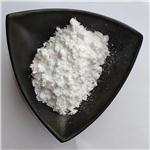Description
Puromycin is an aminonucleoside antibiotic produced by
Streptomyces alboniger. It is a very common antibiotic routinely
used by scientists in biomedical research to select cells modified
by genetic engineering. It specifically inhibits peptidyl transfer
on both prokaryotic and eukaryotic ribosomes. The antibiotic
inhibits the growth of Gram-positive bacteria and various
animal and insect cells. Fungi and Gram-negative bacteria are
resistant due to the low permeability of the antibiotic. For more
than 30 years, puromycin has been widely used as a basic tool
for studying protein synthesis. Now, puromycin hydrochloride
is particularly useful for the selection of cell types harboring
plasmids carrying puromycin resistance genes. Puromycinresistant
cells express pac gene, which encodes an N-acetyl
puromycin transferase. The pac gene can be mobilized on
a plasmid and used to transfect a host cell in an attempt to
provide resistance; therefore, puromycin can be used in gene
selections for mammalian host cells.
This aminonucleoside antibiotic causes premature chain
termination during translation in the ribosomes. Part of the
molecule resembles the 30 end of the aminoacylated tRNA. It
enters the A site and transfers to the growing chain, causing
premature chain release. The exact mechanism of action is
unknown, but the 30 position contains an amide linkage
instead of the normal ester linkage of tRNA; the amide bond
makes the molecule much more resistant to hydrolysis and
thus causes the ribosome to become stopped. It is not selective
for either prokaryotes or eukaryotes.
Also of note, puromycin is critical in mRNA display as it
allows the growing peptide chain to be covalently bonded to its
own mRNA template. Additionally, puromycin is a reversible
inhibitor of dipeptidyl-peptidase II (serine peptidase) and
cytosol alanyl aminopeptidase (metallopeptidase). The mechanism
of inhibition is not well understood; however, puromycin
can be used to distinguish between aminopeptidase M
(active) and cytosol alanyl aminopeptidase (inhibited by
puromycin) and therefore extremely useful in biochemistry
and nephrology research.
Chemical Properties
Crystals.
Uses
Puromycin is a nucleoside antibiotic isolated from Streptomyces alboniger in the 1950s as an anti-trypansomal agent with antibiotic activity. Puromycin is non-selective, inhibiting RNA by blocking ribosomal translation. Puromycin is used in cell biology to select mammalian cell lines that have been transformed by vectors that express puromycin-N-acetyl-transferase.
Uses
Puromycin is an aminonuclease antibiotic produced by the soil actinomycete?Streptomyces alboniger; which induces apoptosis.
Uses
Puromycin has been widely used as a basic tool in research for
studying protein synthesis. It is an antibiotic used by scientists
in bioresearch to select cells modified by genetic engineering. It
inhibits protein synthesis by binding to RNA. It is also an
antineoplastic and antitrypanosomal agent.
Definition
ChEBI: An aminonucleoside antibiotic, derived from the Streptomyces alboniger bacterium, that causes premature chain termination during translation taking place in the ribosome.
Hazard
Toxic to living cells of all kinds.
Toxicity evaluation
Puromycin is a specific metabolic inhibitor of protein synthesis
and acts as an aminoacyl-tRNA analog and peptidyl acceptor.
The latter causes premature chain termination of the protein and
the release of nascent or growing polypeptide chains. In liver, it
has been shown to cause fat accumulation without causing
death of the hepatocytes. Puromycin causes focal glomerular
sclerosis and alters the morphology, localization of anionic sites,
and metabolism of renal epithelial cells. This injury is attributable
to the production of reactive oxygen species.



